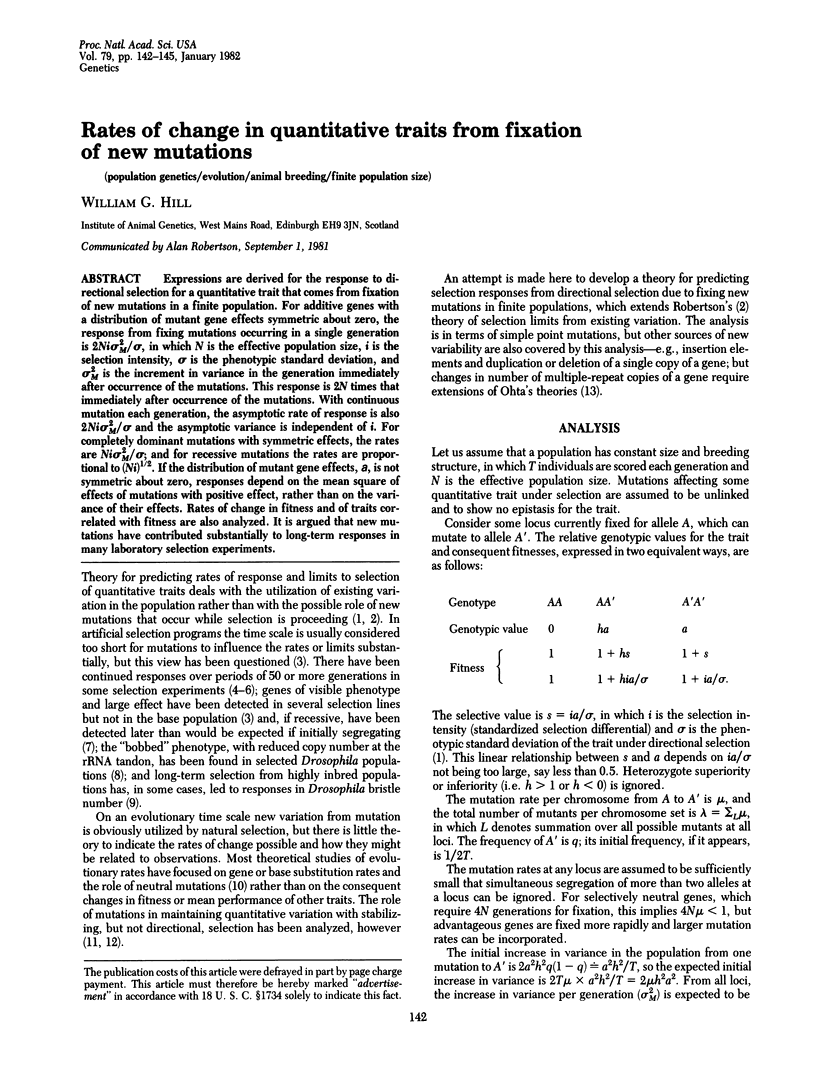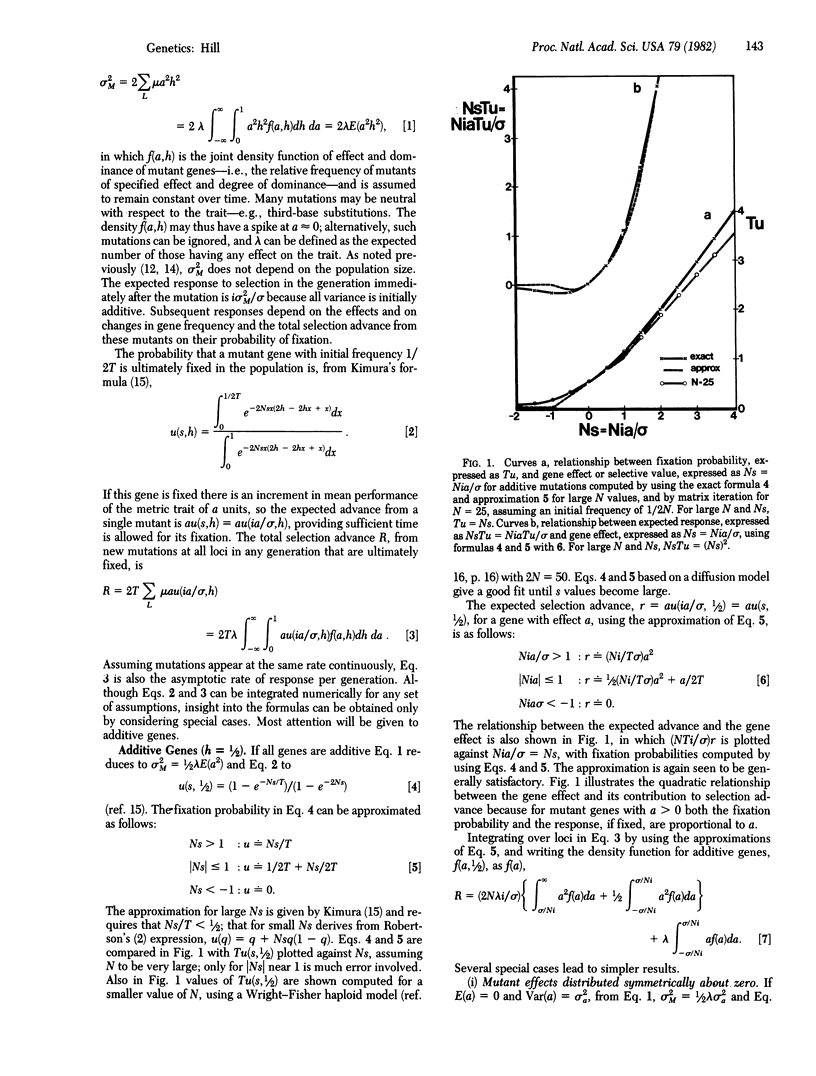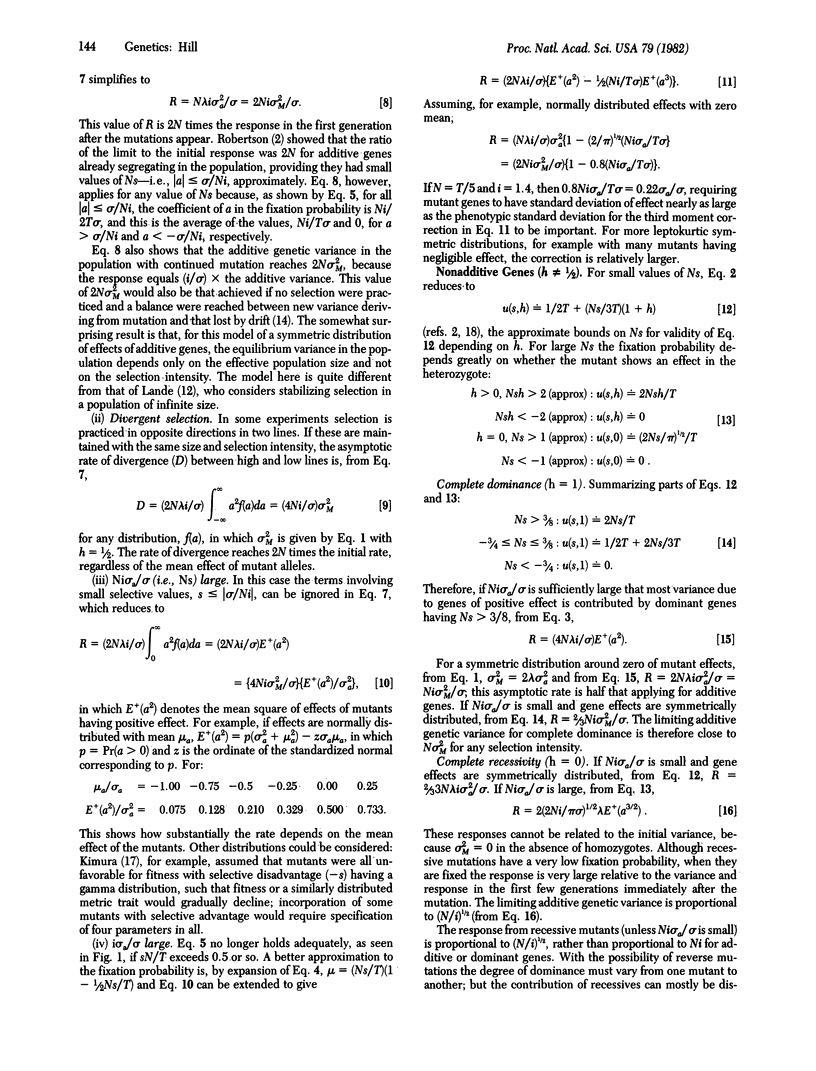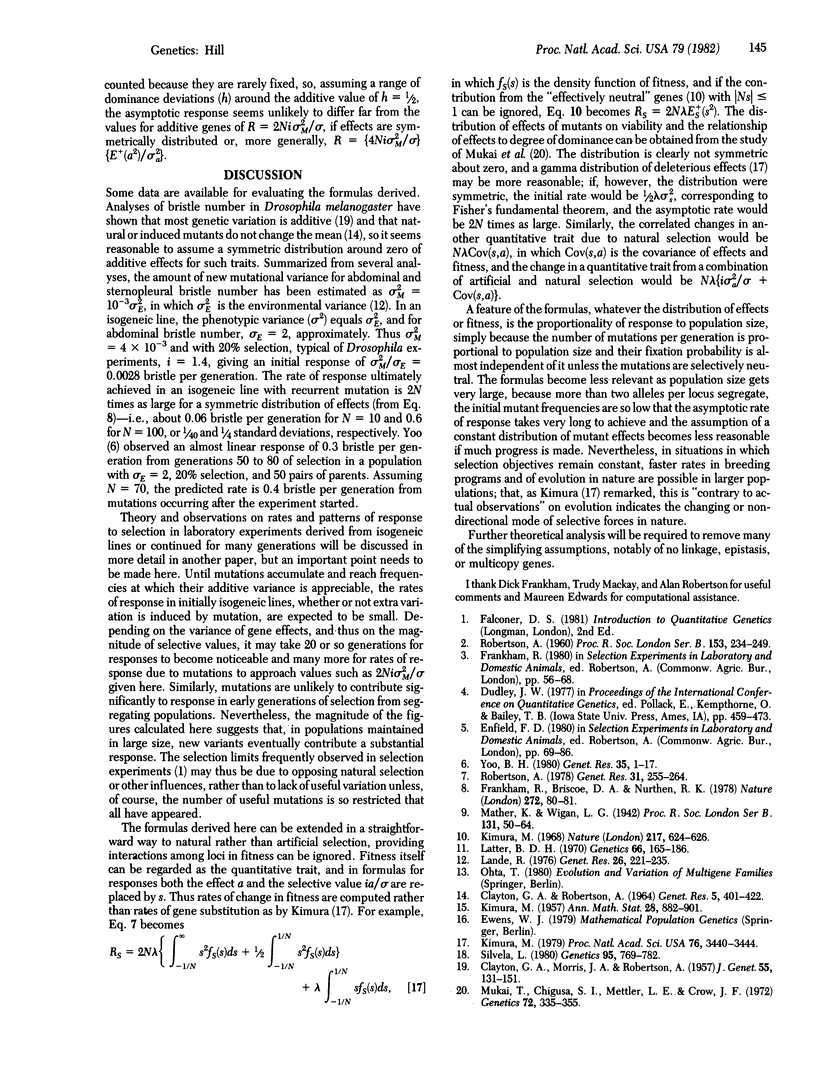Abstract
Expressions are derived for the response to directional selection for a quantitative trait that comes from fixation of new mutations in a finite population. For additive genes with a distribution of mutant gene effects symmetric about zero, the response from fixing mutations occurring in a single generation is 2 Ni sigma 2M/sigma, in which N is the effective population size, i is the selection intensity, sigma is the phenotypic standard deviation, and sigma 2M is the increment in variance in the generation immediately after occurrence of the mutations. This response is 2N times that immediately after occurrence of the mutations. With continuous mutation each generation, the asymptotic rate of response is also 2Ni sigma 2M/sigma and the asymptotic variance is independent of i. For completely dominant mutations with symmetric effects, the rates are Ni sigma 2M/sigma; and for recessive mutations the rates are proportional to (Ni)1/2. If the distribution of mutant gene effects, a, is not symmetric about zero, responses depend on the mean square of effects of mutations with positive effect, rather than on the variance of their effects. Rates of change in fitness and of traits correlated with fitness are also analyzed. It is argued that new mutations have contributed substantially to long-term responses in many laboratory selection experiments.
Full text
PDF



Selected References
These references are in PubMed. This may not be the complete list of references from this article.
- Frankham R., Briscoe D. A., Nurthen R. K. Unequal crossing over at the rRNA locus as a source of quantitative genetic variation. Nature. 1978 Mar 2;272(5648):80–81. doi: 10.1038/272080a0. [DOI] [PubMed] [Google Scholar]
- Kimura M. Evolutionary rate at the molecular level. Nature. 1968 Feb 17;217(5129):624–626. doi: 10.1038/217624a0. [DOI] [PubMed] [Google Scholar]
- Kimura M. Model of effectively neutral mutations in which selective constraint is incorporated. Proc Natl Acad Sci U S A. 1979 Jul;76(7):3440–3444. doi: 10.1073/pnas.76.7.3440. [DOI] [PMC free article] [PubMed] [Google Scholar]
- Lande R. The maintenance of genetic variability by mutation in a polygenic character with linked loci. Genet Res. 1975 Dec;26(3):221–235. doi: 10.1017/s0016672300016037. [DOI] [PubMed] [Google Scholar]
- Latter B. D. Selection in finite populations with multiple alleles. II. Centripetal selection, mutation, and isoallelic variation. Genetics. 1970 Sep;66(1):165–186. doi: 10.1093/genetics/66.1.165. [DOI] [PMC free article] [PubMed] [Google Scholar]
- Mukai T., Chigusa S. I., Mettler L. E., Crow J. F. Mutation rate and dominance of genes affecting viability in Drosophila melanogaster. Genetics. 1972 Oct;72(2):335–355. doi: 10.1093/genetics/72.2.335. [DOI] [PMC free article] [PubMed] [Google Scholar]
- Silvela L. Genetic changes with generations of artificial selection. Genetics. 1980 Jul;95(3):769–782. doi: 10.1093/genetics/95.3.769. [DOI] [PMC free article] [PubMed] [Google Scholar]


